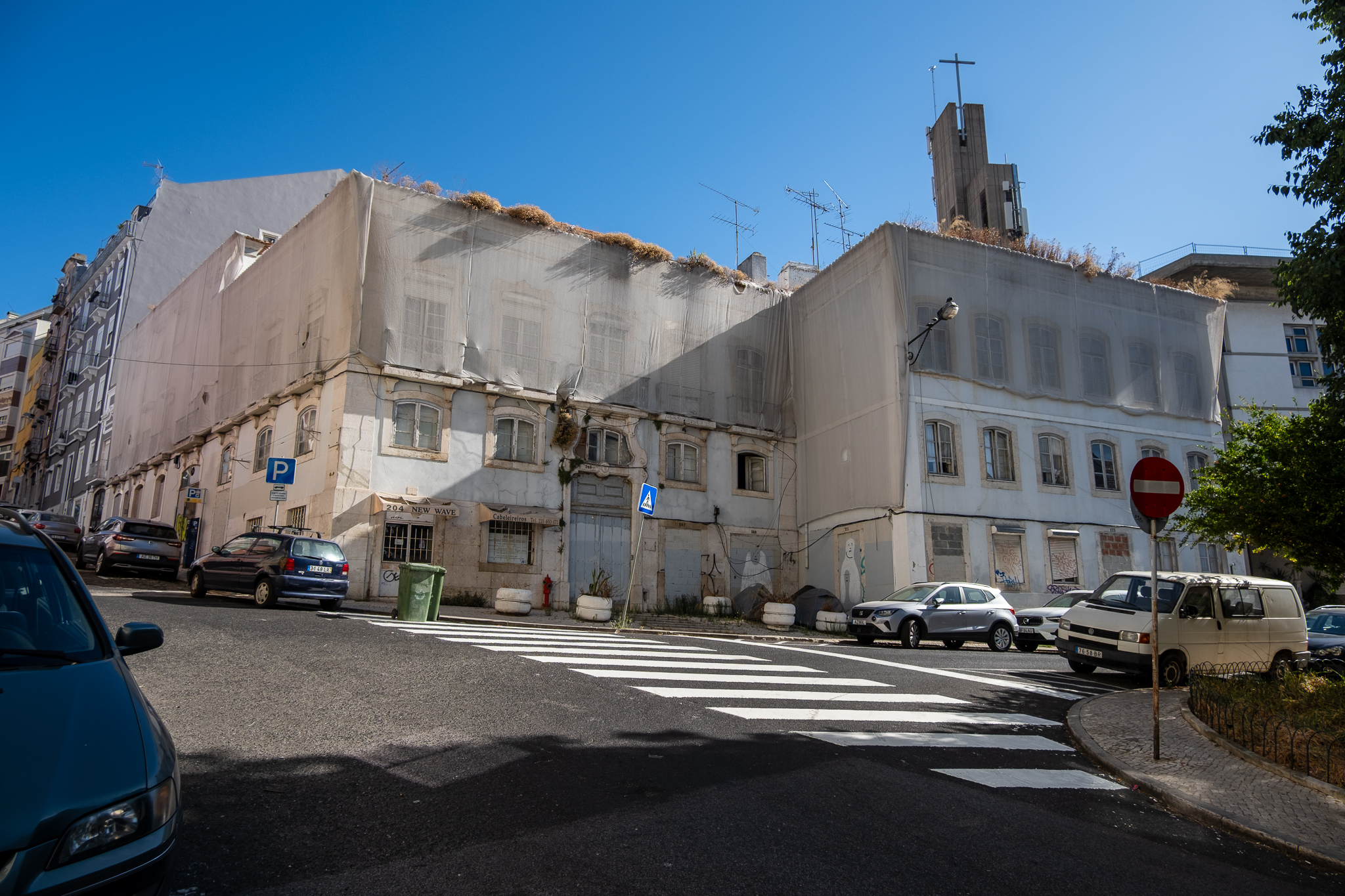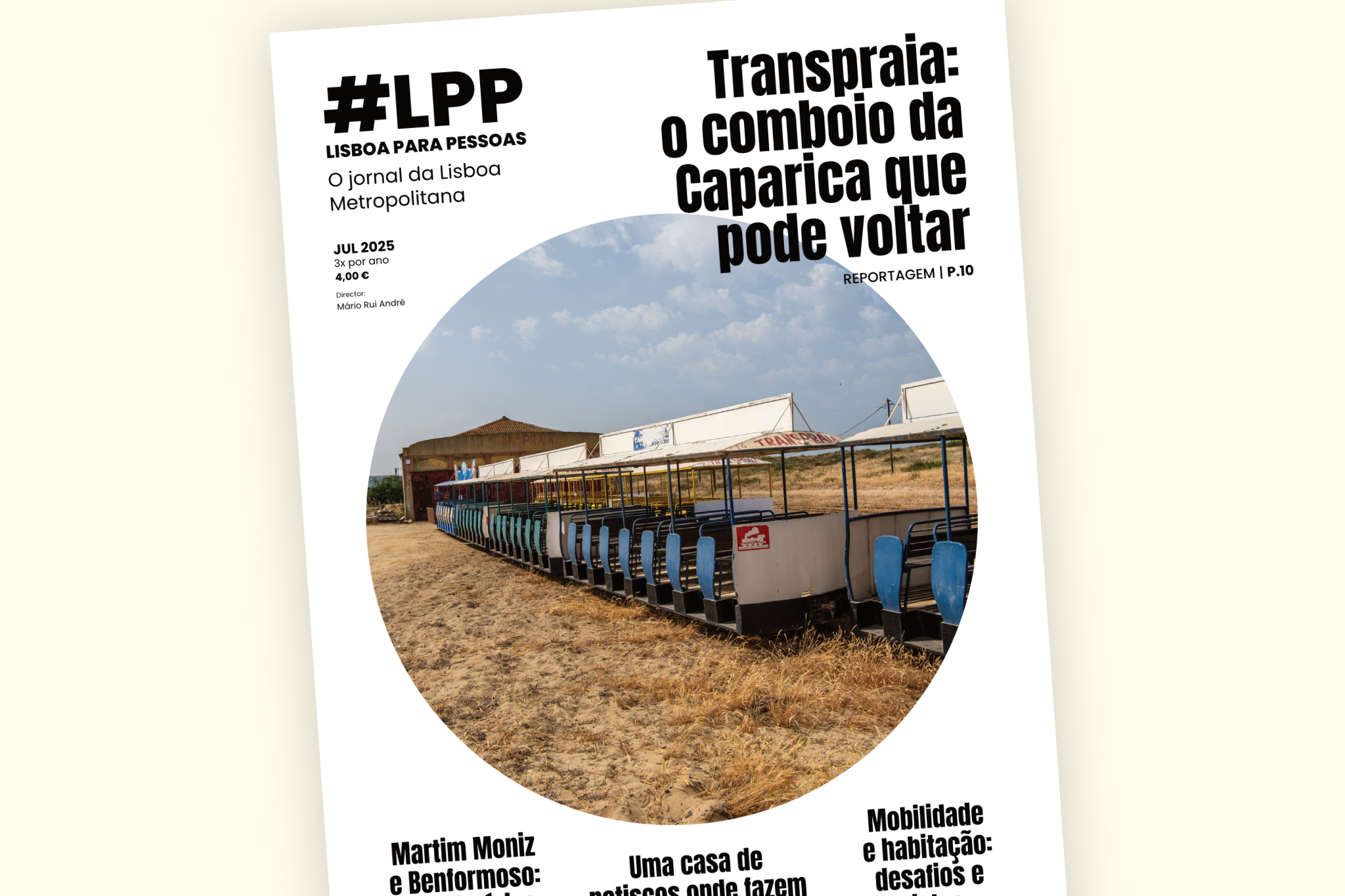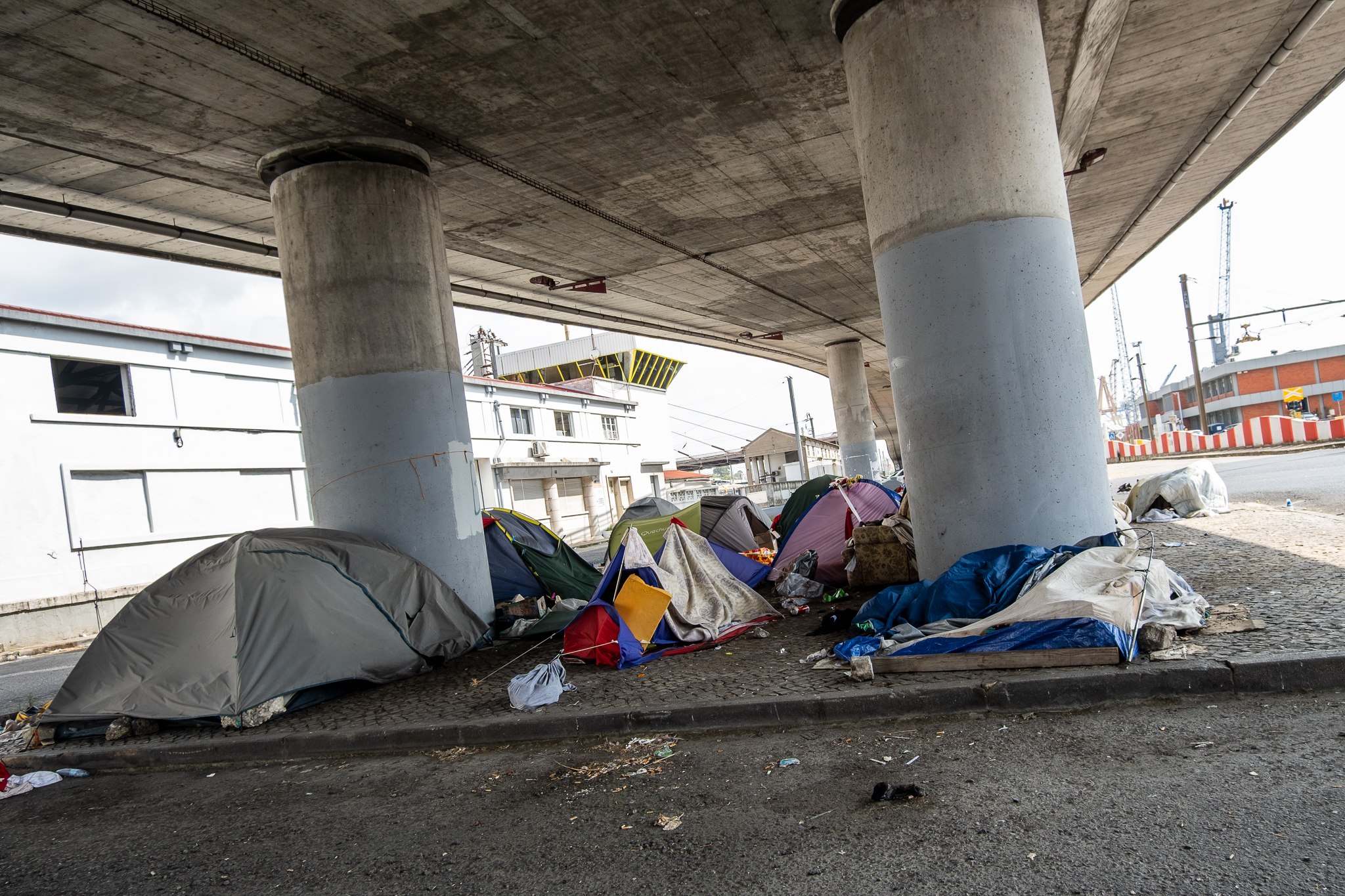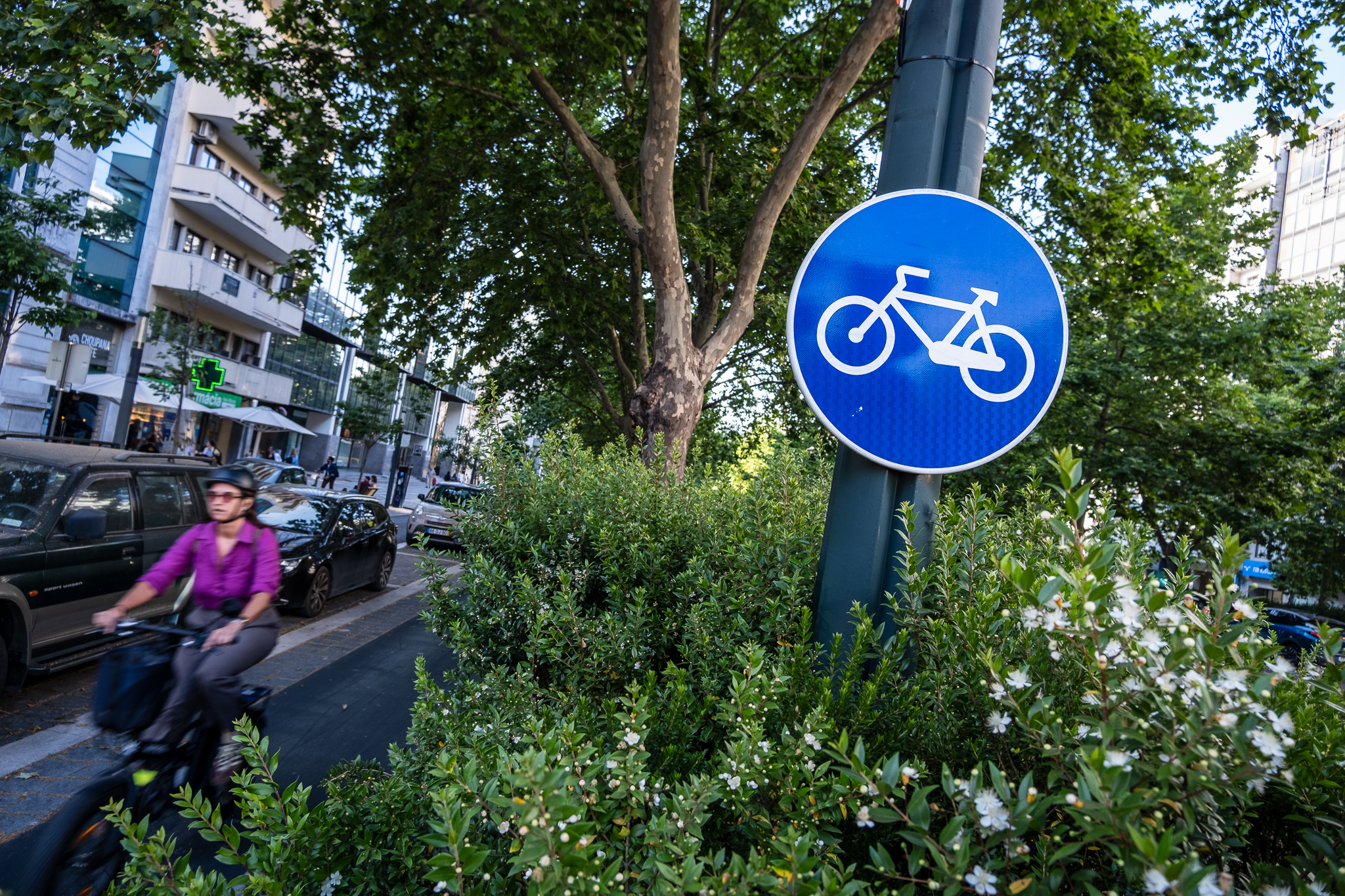One Sunday a month, traffic will be closed around Praça da Alegria, in the parish of Santo António. And in Jardim da Parada, in Campo de Ourique, there are plans to do the same. These initiatives will allow us to test "superblocks" in those areas and prepare for possible more definitive actions. The model may not be the same as Barcelona's, but they can...

Close the envelopes of the Praça da Alegriain Santo António, and Parada Gardenin Campo de Ourique, to traffic Sundays and holidays - at least once a month - is what both the Lisbon City Hall and the respective Juntas de Freguesias (parish councils) intend. The objective is start preparing for the creation of "superquarteirons in those two areas of the city - a proposal that came out of the first edition of the Citizens' Council.
Superquarters are areas of the city where the Automobile traffic is reorganized so as to divert all those crossing in the neighborhoods to the surrounding main streetsThus, within the neighborhoods, walking and cycling are guaranteed priority, while access for residents' cars and emergency vehicles is ensured. The idea of superblocks was born in Barcelonawhere it has been developed in various parts of the citywith diverse interventions in the public space and that in some cases include total pedestrianization of squares and streets.

In Lisbon, people started talking about "superblocks" when the first Citizens' Council was held in May of last year. Among the several ideas that the citizens pointed out for the city, was the creation of Barcelona-like superquarter blocks, starting with a pilot project in Alvalade - a neighborhood that presents an urban grid similar to that of the Catalan capital and that would allow the establishment of local and main transit networks. A year later, the Citizens' Council proposal will move forward but not in Alvalade and not on the same model as Barcelona: Lisbon will create superblocks, but only on Sundays and holidays, at least in a first phase, to test new road circulation models and eventually prepare more definitive actions. The project is still in an embryonic stage.
"We talked a lot about how we could cut pollution and how people could have more restful lives"said Carlos Moedas, Mayor of Lisbon, at the kick-off session of the second edition of the Citizens' Council, which took place this Saturday. "And one of the ideas was that on Sundays or on holidays in certain areas of the city, on certain blocks, we have so-called 'superblocks,' where we close blocks to traffic so that people can walk safely and stroll around. That is an idea that we are implementing."Moedas announced, mentioning Praça da Alegria and Jardim da Parada as the first two pilots.
A citizen proposal as a starting point
The idea of creating a superquarteirão at Jardim da Parada, in Campo de Ourique, was born from a citizen initiativewho presented the concept with a view to its possible implementation after the expansion works of the Red Line of the Metro in that area. The suggestion involves transforming the streets that converge at the Parada Garden into coexistence and local access zones, and for eliminating all traffic around the garden. In this way, it would be possible to create a "superblock" consisting of the garden and the eight surrounding blocks.


The proposal of the superquarteirão was publicized through an online petitionwhich has nearly 900 signatures at the time of this article, and which includes other measures to improve the neighborhood and coexistence with the future Metro station. The idea was well received by the Mayor of Campo de Ourique, Pedro Costa (PS), who, on several occasions, has already shown interest in implementing it after the Red Line extension works. For now, closing the Garden's surroundings on Sundays and holidays may be a first approach to work this idea with the population.
To Lisboa Para Pessoas, Pedro Costa explained that these "precarious closures" are a "way to show the population how to appropriate those spaces". "Basically, closing these streets and squares for one day a week or one day a month is a opportunity to show empirically, to each one of us, the space that we are giving up to the automobile and that we could reconquer“commented the Mayor of Campo de Ourique. The conversation about creating a temporary superquarter in Jardim da Parada is still at an early stage, and between Pedro Costa and Carlos Moedas took place only the day before this second Citizens' Council. "According to the conversation I had with the Mayor, the Parada Garden will be one of the areas to be studied to do so, but I also signaled to the Mayor my opinion that the Maria Pia Street has the potential that we can also appropriate it and prove what that could be."

Without committing to dates, the President of the Junta de Campo de Ourique revealed the will to test this superquarteirão on a weekly or monthly basis "later this year" and to initiate with the population of Jardim da Parada the "implementation of the project or a project similar to the one presented by the citizens' movement". Pedro Costa wants to develop the supermarket in Parada together with the local population, "negotiating with those who live there"and made it very clear that "those who live there are probably not the ones who live 500 or 800 meters away, but the ones who will see their house's door changed by this change in the route".. The President of the Junta has no doubt that a superquarteirão at that location should "follow the best of international examples" e "be implemented progressively"; and points to more certainties: "We can't continue to have crossing traffic in that plaza and we have to reduce at least some of the parking"after the extension of the Linha Vermelha. "The arrival of the Metro creates a responsibility for everyone and we have to take it on from day one. O super room is the physical embodiment of this responsibility and an increase in demand.”
Praça da Alegria without cars once a month
Also in Praça da Alegria, next to Avenida da Liberdade, a temporary super block is being prepared. The measure will be at a more advanced stage in relation to the Jardim da Parada, according to statements from the President of the Santo António Council, Vasco Morgado (PSD), to the Public. "We will close Joy Square once a month. In principle, it will be on the last Sunday of the month. This comes in the logic of what the mayor said about listening to the people and I think it will have everything to go well."said the mayor to that newspaper. "Joy Square is the central garden of our parish and has always been the people's square. That's where people naturally converge."
According to Público, the initiative is expected to come to fruition this spring and, if it goes well, it should become definitive, with details to be announced shortly. For now, it is known that the plan will involve the closing, on a Sunday, the surrounding area of the Praça da Alegria to road circulation, allowing the occupation of the space by people, who will find a cultural and sports program, and street commerce, with, for example, handicraft and record selling stalls. Given the Hot Club de Portugal's location in that square, Vasco Morgado intends to establish a connection with the space and "bring out some of the musical programming that they have"assuming that "the programming will be diverse and never the same, never repeated. There will be new things every month. All this in a garden that is a must-see"..
The Lisbon City Hall confirmed, meanwhile, to Lisboa Para pessoas that the beginning of this initiative is scheduled for April 30th, "It is expected that the closure of the car circulation in Praça da Alegria and the dynamization of a set of initiatives aimed at the population will be repeated on the last Sunday of each month"..

If the idea of a super-block in Jardim da Parada is a project that is still being designed and has the ambition to be similar to the Catalan model, in the Santo Antonio parish the closing of the Praça da Alegria for one Sunday a month may also be a step towards preparing a definitive new circulation scheme in that area, although this idea will not be on the table for the time being.
The plan for the Praça da Alegria is close to the will expressed in a Chamber proposal that was approved unanimously in May of last yearafter the controversial proposal of closing the central body of Avenida da Liberdade to cars on Sundays and holidays, suggested by Livre and which was also approved - but by a majority - with the Mayor's dissent. Carlos Moedas mentioned, in some of his speeches at the time, that he was more in favor of the idea of closing certain streets, squares or avenues in the city's parishes to cars on Sundays than doing it on a structural artery such as Avenida da Liberdade. This intention was expressed in the aforementioned proposal, which was unanimously approved by the city council and put forward by the PCP:
"Operationalize the consolidation and planned expansion of the 'A Rua é Sua' program
- proposal approved unanimously
in the following terms: (...) d. The extension to all parishes of the cutting off of a central artery with local commerce and services, on Sundays, or a circulation route that is considered more appropriate, should be carried out after the opinion of the services, the agreement of the respective parish council and the promotion of public consultation and participation for the application of the options listed."
Waiting forA Square in Every Neighborhood
For several years an intervention has been planned for the Praça da Alegria in the scope of the municipal program A Square in Every Neighborhood. After being presented to the population in June 2019 and that the work was planned for 2021, it never went ahead. With no dates announced for its realization, the project continues to be defended by the President of the Santo Antonio Council, who told Público want to go ahead with this requalification with the Lisbon City Hall, in order to, in this way, close the Jardim Alfredo Keil's recovery intervention meanwhile executed by the Junta de Freguesia.
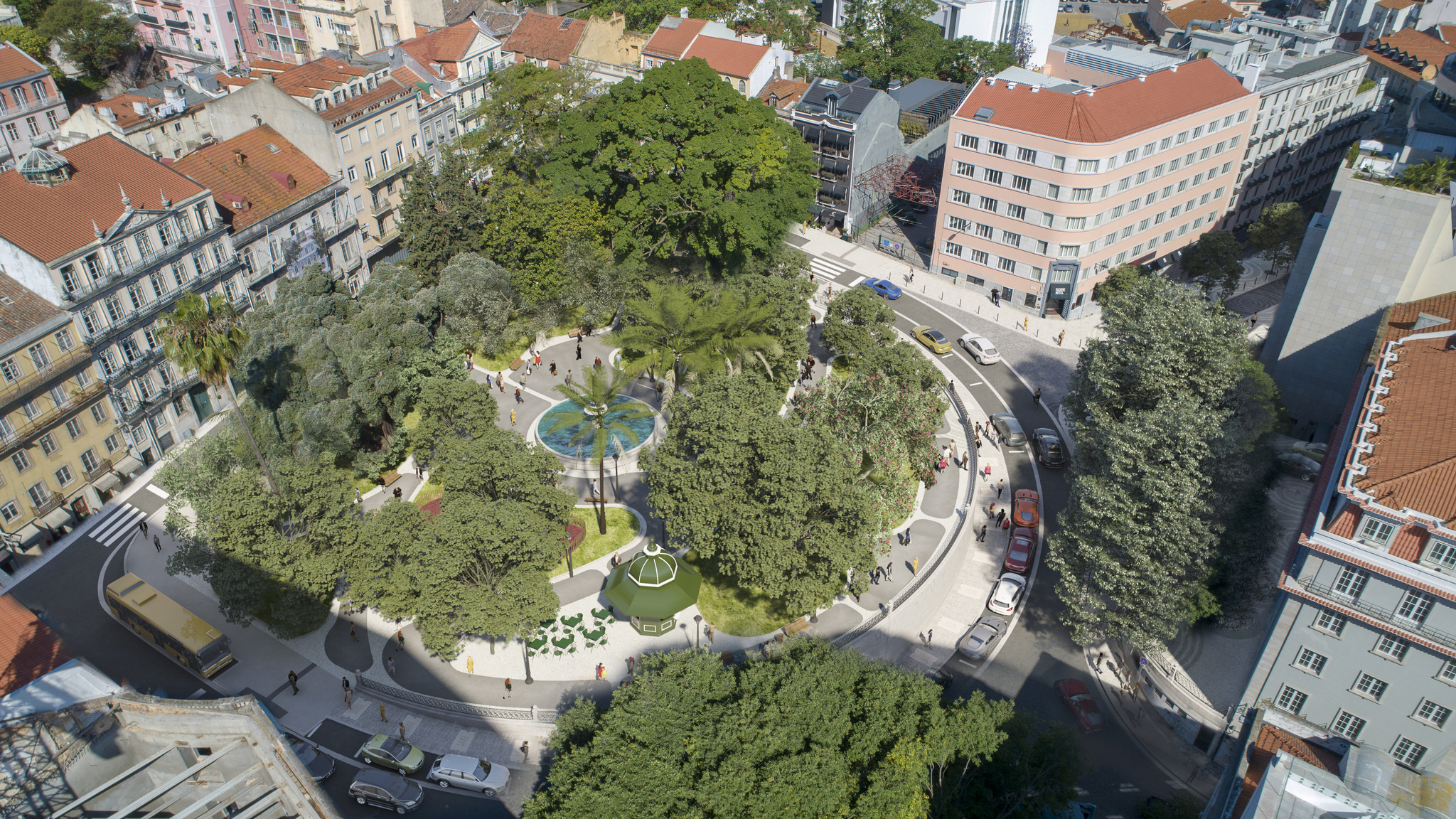

The intervention under d''sA Square in Every Neighborhood in Praça da Alegria is predicted:
- A road reordering and suppression of disordered parking, with the resizing of the lanes and parking lots, allowing the widening of sidewalks and the creation of new pedestrian areas;
- the creation of mixed zones and the leveling off of sidewalks with the elimination of kerbs, in order to allow the inclusive circulation of people with reduced mobility, in several spaces and in all crosswalks, as well as the maximum clearance of sidewalks from cabinets and other infrastructure equipment;
- an improvement of the physical and spatial relationship of the central garden with its surroundings, namely through the direct articulation between the paths and crossings of the garden and the connecting walkways, together with the elimination of existing visual and architectural barriers;
- an articulation of the proposal with interventions of similar characteristics in the surrounding area, such as Avenida da Liberdade and Parque Mayer, establishing a line of continuity between spaces with different characteristics;
- the reinforcement of the afforestation in the entire square, with a selection of exotic species for the Alfredo Keil Garden that reinforce its romantic character, and with the placement of lodão and jacaranda trees on the side walks, species that provide shade in the summer.
According to the Lisbon City Hall, the d' projectA Square in Every Neighborhood in Praça da Alegria is "in progress" e "the project should be technically concluded by the end of May, after which the conditions will be met to go ahead with the contracting of the work".. You can see the general project of the intervention here below:

Lisbon Superstorey
The first edition of the Citizens' Council took place over the weekend of May 14 and 15, 2022, and had climate change as its theme. The second edition is dedicated to the "15 minute city" and will take place, in an improved format, over two Saturdays: a first session took place last March 25th, and next Saturday, April 1st, there will be the second session with the presentation of the proposals to the Mayor and the media.
At the welcome session for this second Citizens' Council, the 50 newly selected citizens had the opportunity to hear two testimonials from citizen ambassadors of the first edition, including that of Helena Peixoto, who participated in the idea of the superquarteirões. "I was part of the project with six other elements. It's an idea that will be tested in Praça da Alegria. If it works out, it will probably be improved and replicated around the city."he commented, reading a text that he will have written to help guide in the orality. "I lived and felt the Citizens' Council as a kind of creativity laboratory where suggestions were debated and evaluated, in order to implement projects that would enhance the city and provide those who live, work and visit us here with new sensations and well-being"he added, challenging the participants of this second edition to take this opportunity to transform Lisbon into a better city.
Lisbon's first approaches to superstores come at a time when the city of Barcelona is already working on a new paradigm: instead of thinking of these superblocks neighborhood by neighborhood, the Catalan city is scaling this urbanistic model for the whole city and the solution is to design green and pedestrian corridors, which require rethinking the entire circulation of all modes of transportation on an urban scale.


It is certain that Lisbon may not have such an ambitious model of super-blockyards as Barcelona, but a model of "Lisbon-style super-blockyards" may be emerging.
Update at 14:50 on March 30: added new information provided by the Lisbon City Hall about the future of Praça da Alegria.

